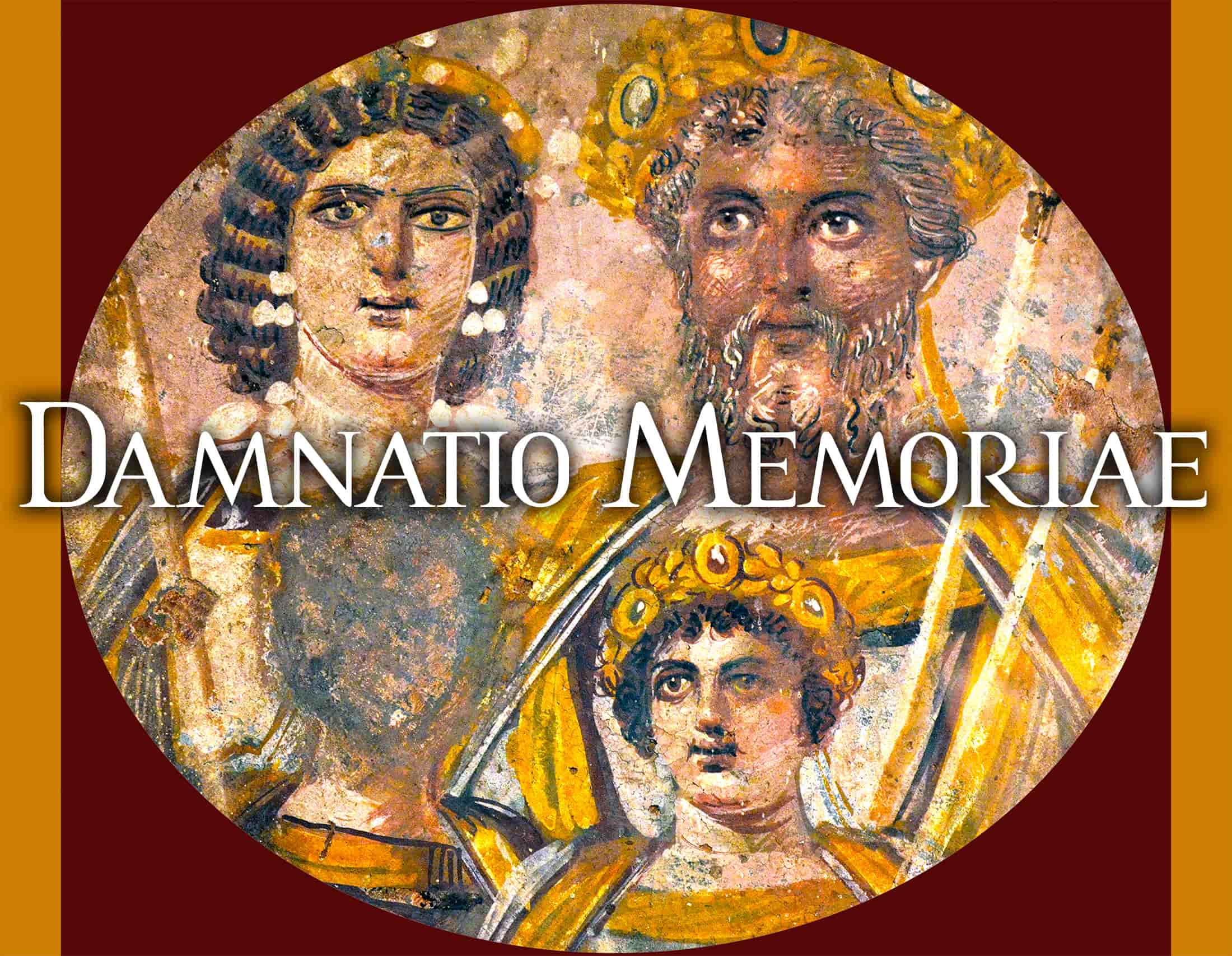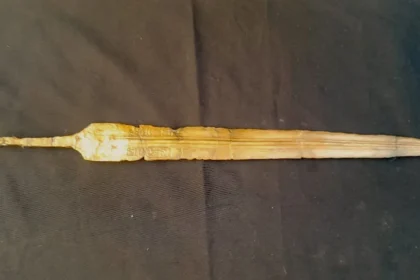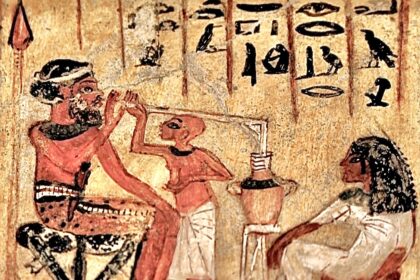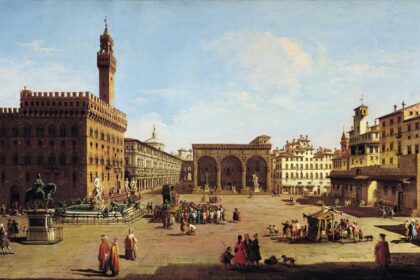Without a doubt, Tutankhamun is one of the most well-known pharaohs in history. The king, who was likely born about 1340 B.C., only ruled for a decade at most. The British archaeologist Howard Carter and his colleagues discovered the tomb of Pharaoh Tutankhamun in Egypt’s Valley of the Kings on November 4, 1922. With its four separate rooms along with an entry hall and stairs, the tomb is still regarded as one of the greatest archaeological finds ever discovered. The reason for this is the astonishing vast array of artifacts that the British explorer Howard Carter and his team discovered in the tomb. Over the course of three millennia, over 5,000 objects were preserved, providing a priceless look into the arts and culture of the pharaohs. As we celebrate 200 years since the discovery, here is a look at six artifacts unearthed from Tutankhamun’s tomb.
The mask of Tutankhamun
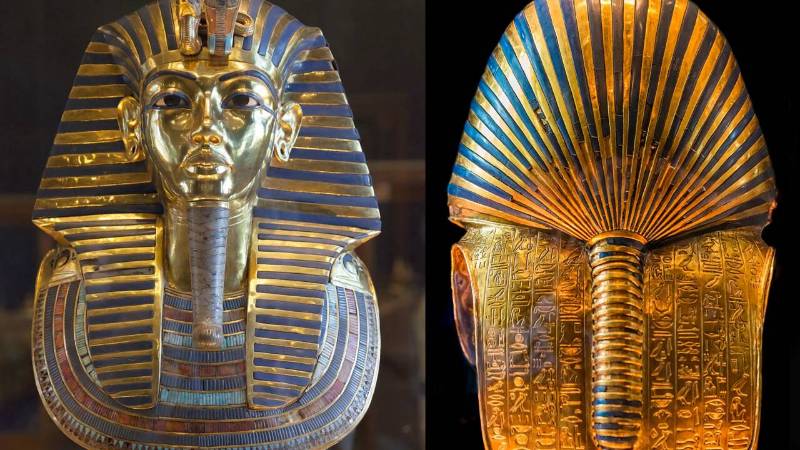
The burial mask of Tutankhamun is, without a doubt, the most well-known artifact in the world. Even though the tomb was initially discovered in November 1922, this artifact wasn’t discovered until October 1925, when investigators unsealed the last sarcophagus guarding the mummy of the king. The mask stands around 20 inches (50 cm) tall, 16 inches (40 cm) broad, and 20 inches (50 cm) deep, and it weighs just over 22 pounds (10 kg), making it a magnificent masterpiece of Egyptian goldsmithing.
It is composed of two gold plates that have been combined and adorned with several semiprecious stones, including lapis lazuli, quartz (for the eyes), and obsidian. Despite a reconstruction suggesting that Tutankhamun was not as handsome as this masterpiece claims, his face is shown on a headpiece that is topped by two significant animals: the vulture and the cobra.
More than that, there is a theory that the mask was not intended for the emperor who died so suddenly and abruptly, much like his grave.
The meteorite iron dagger

A wide variety of weapons, such as arrows, shields, and swords are among the more than 5,000 items found in Tutankhamun’s tomb. A dagger with an iron blade and a gold sheath set with beautiful stones stood out among the weapons available. Experts paid attention to it since ironwork in Egypt was still in its infancy during the reign of Tutankhamun (during the 18th dynasty, between 1332 and 1323 BC), when the art was only being developed.
The unique history of the item, which would have begun outside the kingdom of the pharaohs, has been uncovered via studies, the most recent of which was published in February 2022.
It has been suggested that King Tushratta of Mitani (whose capital was located in modern-day Syria) presented the weapon to Amenhotep III (the father of Akhenaten and the grandfather of Tutankhamun) as a gift between 1380 and 1350 BC. The item is even more valuable since the investigation of its composition revealed that its metal was not of earthly origin; rather, it would have originated from an iron meteorite.
Tutankhamun’s mannequin
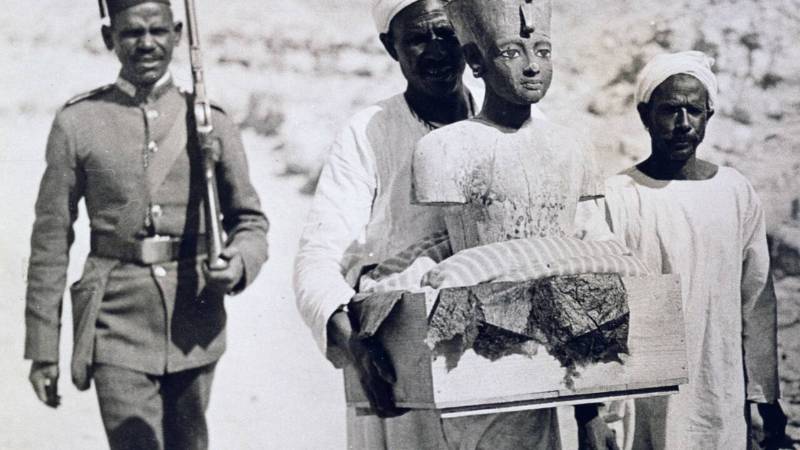
Among the many statues and paintings depicting the pharaoh found in his tomb, the one that was found half-hidden in the pre-chamber stood out. An unfinished wooden bust with a snake on its head. The face is identical to those seen in previous three-dimensional depictions of Tutankhamun, and the skin is painted dark red, the hue commonly employed by ancient Egyptian artists to portray males. The sculpture’s usefulness is its defining characteristic.
Howard Carter believes the statue to be a mannequin used to try on Tutankhamun’s attire and jewels. For instance, the bust has markings that are consistent with a corselet having been worn, much like the one discovered in the tomb. Gold sandals are only one example of the many articles of clothing and accessories that have been discovered in the different rooms, all of which point to the pharaoh having a sizable wardrobe to the end of time and beyond
A pair of trumpets
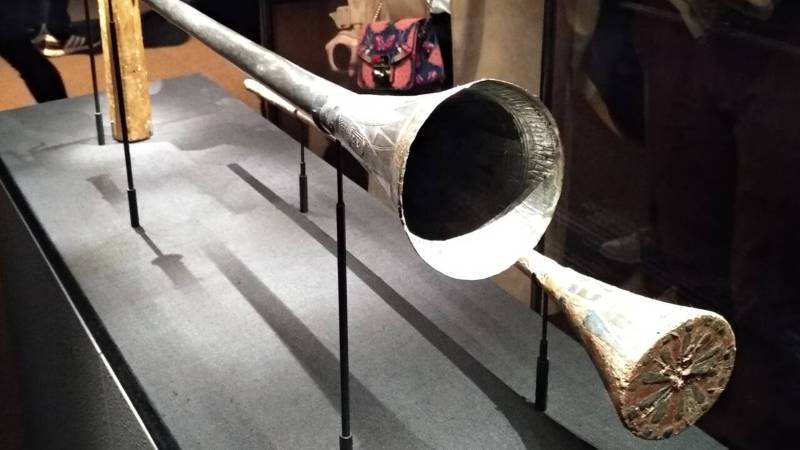
Musical instruments were among the hundreds of artifacts discovered in King Tut’s tomb, with a particularly impressive pair of trumpets being located in two separate chambers. The length of one silver one is around 20 inches or 50 cm. The second one is made of bronze and is a touch smaller. However, both have engravings of several deities, including Amun and Ra. These are the earliest known working trumpets and the only ones known from ancient Egypt.
A musician named James Tappern performed with one of them on a BBC broadcast in 1939, bringing their music back into the world after more than 3,000 years of obscurity. These days, it’s not acceptable to handle relics because of how delicate they are. While the bronze trumpet was taken from the Egyptian Museum in Cairo in 2011, it turned up missing just weeks later.
The sanctuary of Anubis
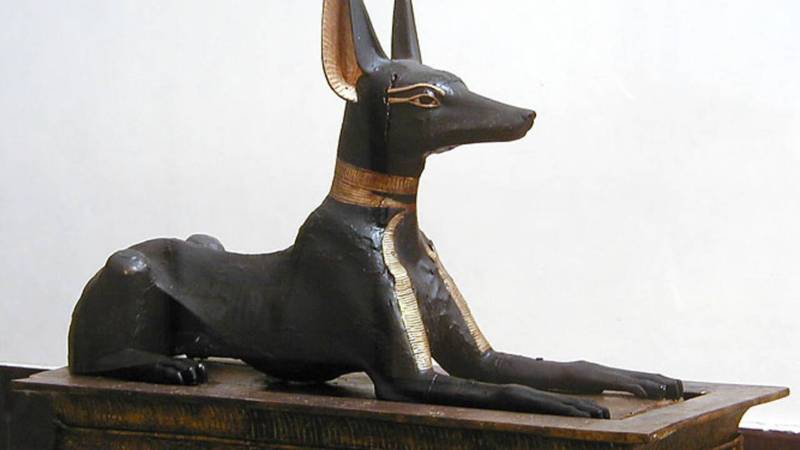
The ancient Egyptian tombs often include depictions of the deity Anubis. Tutankhamun’s tomb was no different. Howard Carter and his crew, when investigating the tomb, came upon a statue of the god with a jackal’s body. The animal is lying down on a bed of black painted wood, and it has silver claws and gold ears.
It was located on top of a shrine that had suddenly materialized next to Tutankhamun’s tomb, just over a chest that held the King Tut’s canopic vases. Jewelry, amulets, and other trinkets were stored in the trapezoidal compartment. It has been acquired by the Egyptian Museum in Cairo and is on permanent exhibit.
The throne of Tutankhamun
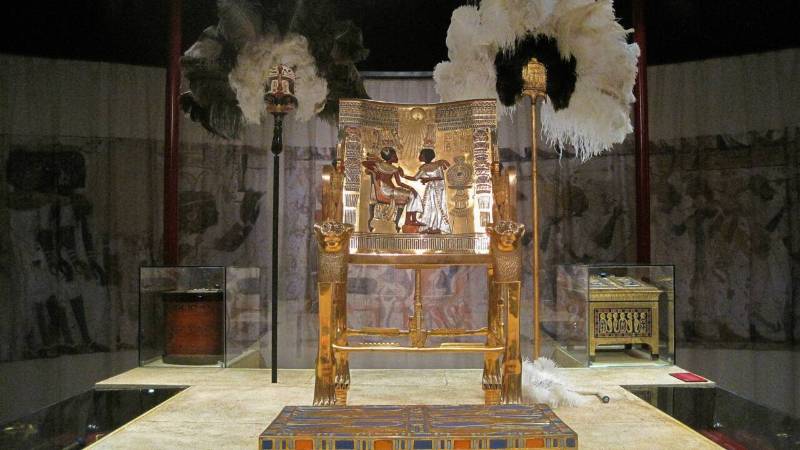
Several artifacts unearthed inside the pharaoh’s tomb demonstrate the ancient Egyptians’ level of sophistication.
This is the situation with Tutankhamun’s golden throne. The royal chair is a work of art, crafted from wood and gilded with precious metals. Colored glass and semiprecious stones are used for ornamentation. In the shape of winged snakes adorned with the double crown of the pharaohs, two lion heads guard the ends of the armrests.
Tutankhamun and his wife, Ankhesenamun, are shown on the backrest. However, the throne’s inscriptions suggest it was created while the pair was still known as Tutankhaton and Ankhesenaton, after the deity Aten. In addition to its display in the Louvre, this object is also housed in the Egyptian Museum in Cairo.
The hundreds of artifacts that were discovered in Tutankhamun’s tomb include a number of extraordinary items. Another is the king’s coffin and mummy, both of which have provided significant insight into the life and times of the young man who reigned from the ages of 9 to 19.
Tutankhamun’s tomb in the Valley of the Kings had the bulk of its contents initially removed, but the remaining items were later brought back and are currently kept within. Even yet, the pharaoh’s tomb still holds some mysteries despite the amazing burial collection. It keeps prompting more and more curiosity. A considerable portion of Tutankhamun’s wealth may not be his, as shown by objects that have displayed traces of re-engraving. After his tragic death, it was probably meant for someone else and credited to him.



